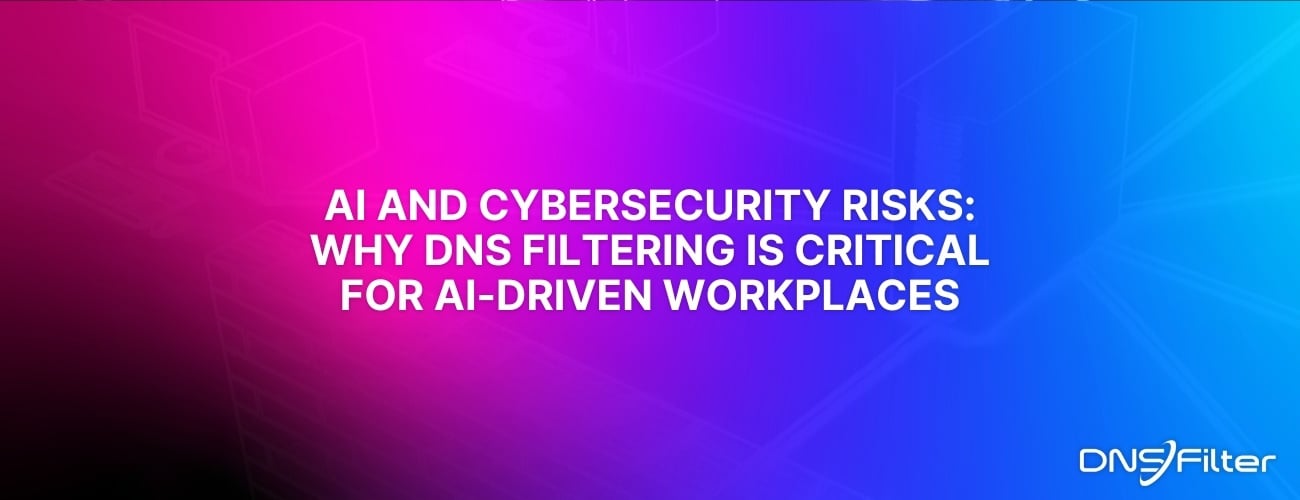Share this
New from DNSFilter: DNSFilter Relay
by Josh Lamb on Jun 26, 2019 12:00:00 AM
Less than a month ago the DNSFilter team brought you the biggest innovation in company history with DNSFilter Roaming Clients. This gave you the ability to apply policies and filter content on and off-network. Now DNSFilter will grant you the same capability but for all devices within your network with the DNSFilter Relay.
The Relay, which allows you to have “X-Ray” vision into your own network. It allows you to see what each device on your network’s individual DNS requests are without installing a Roaming Client on the device. This is all done through a simple, lightweight piece of software that is installed on your LAN.
Roaming Clients allow you to deploy policies, filter, and monitor devices as they go off network. The ability to do this allows you to see the individual DNS traffic from each device with the simple and easy installation of a client. The DNSFilter Relay is a great addition to Roaming Clients, by granting you the ability to see the individual DNS traffic of each device on your network.
How is this different from NatIPs?
Our NAT IP feature allows you to have up to 7 different policies per network, but there was no specific reporting.
- The DNS Relay allows you to have unlimited policy customization. Setting policies for single LAN devices and IP ranges
- The DNS Relay allows you to view reports of LAN devices in the Query Log. (NAT IPs only showed network-wide traffic reports)
Whether you are a small business or a multi-thousand user MSP, DNSFilter Relay is a compliment to any network. Why? Visibility. In today’s current age of IoT devices and widespread phishing attacks, your network is under constant stress and danger. DNSFilter Relay can give you insight to which devices may be infected without having a client installed.
DNSFilter Relay is configurable as a container, virtual machine, or executable that sits inside your LAN. The Relay will only filter and report outgoing internet traffic. Internal traffic remains private and unaffected.
“X-Ray” vision is finally within your reach.
Share this
 Artificial Intelligence in Cybersecurity
Artificial Intelligence in Cybersecurity
The term “artificial intelligence (AI)” was first coined in 1956. While progress stalled for many years, we can thank IBM for sparking real interest in AI as viable technology: First in 1997 when the computer Deep Blue defeated a chess champion and again in 2011 when Watson won Jeopardy!
 The Mind Games Behind Cyber Attacks
The Mind Games Behind Cyber Attacks
Hackers have long understood that the most sophisticated firewall is no match for a well-placed psychological trick. While many focus on the technical prowess of cybercriminals, the real magic often lies in their ability to manipulate human behavior. By exploiting our natural tendencies and cognitive biases, hackers can slip past even the most robust security systems. It's not just about cracking codes; it's about cracking the human psyche.
 AI and Cybersecurity Risks: Why DNS Filtering is Critical for AI-Driven Workplaces
AI and Cybersecurity Risks: Why DNS Filtering is Critical for AI-Driven Workplaces
Artificial intelligence is transforming business operations, automating everything from customer service to data analysis. But with these advancements come new security challenges. AI-driven cyber threats are becoming more sophisticated, enabling attackers to automate phishing campaigns, generate malware, and exfiltrate sensitive data at scale. Without proper safeguards, AI tools can unintentionally leak corporate secrets or connect to malicious ...


